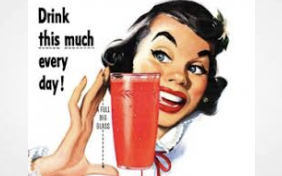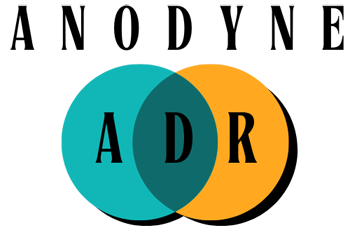Mondaq
The Cannabis sativa L. plant serves a wide range of purposes, many of which are uncontroversial. It can be grown in the EU, in which context it is commonly called ‘hemp’.
The Cannabis sativa L. plant serves a wide range of purposes, many of which are uncontroversial. It can be grown in the EU, in which context it is commonly called ‘hemp’. The plant notably produces cannabidiol (CBD), which the Court of Justice of the European Union has unequivocally ruled is not a narcotic drug. Nonetheless, some EU Member States remain reluctant to accept hemp cultivation.
In Case C‑793/22, the EU Court of Justice examined a dispute between Biohemp Concept and the Romanian government over a permit to cultivate hemp indoors using hydroponic systems. Biohemp proposed this method to efficiently produce hemp with high CBD levels. The Romanian authorities denied the permit, citing concerns over the potential for elevated THC levels and challenges in monitoring cultivation. Biohemp contested the refusal, leading to an important legal assessment by the CJEU, which issued its judgment on 4 October 2024.
Indoor hydroponic cultivation of hemp
Biohemp Concept submitted an application to the Romanian government for a permit to cultivate hemp (Cannabis sativa) over a total area of 0.54 hectares. The application included 0.50 hectares for outdoor cultivation and 0.04 hectares for indoor cultivation with hydroponic systems. In hydroponics, plant roots are supplied with a nutrient-rich water solution, allowing the plant to grow without soil. Biohemp wanted to grow hemp with a high level of CBD and a very low level of THC.
CBD (Cannabidiol) is a naturally occurring compound found in the cannabis plant. Unlike THC (Tetrahydrocannabinol), CBD lacks psychotropic effects. In a landmark 2020 ruling (C-663/18), the EU Court of Justice confirmed that CBD is not a narcotic drug (see the discussion here). In the EU, CBD is used for example in cosmetics. Biohemp’s permit to grow indoors was refused. The Romanian government took issue with the hydroponic systems. Biohemp asserted that this growing method is beneficial because it is very efficient and enables the cultivation of hemp with a higher CBD content. But the authorities feared that these controlled systems might instead lead to plants with elevated THC levels and that cultivation could not be monitored effectively. Biohemp challenged the government’s refusal. The matter reached the EU Court of Justice, which issued its judgment on 4 October 2024 (Case C‑793/22).
EU agricultural law – Hammarsten
To understand the link with EU law, we need to go back to the year 2001 when Ulf Hammarsten’s request to grow industrial hemp was denied by the Swedish authorities due to an alleged violation of Swedish narcotics law (Case C-462/01, Hammarsten). The EU Court of Justice then held that the Swedish rules, prohibiting hemp cultivation, violated EU law. Hemp with low THC is an agricultural product and its growers should be able to benefit from European subsidies. The Court was not convinced by Sweden’s argument that its laws protect public health by regulating hemp as a narcotic drug. EU law already addresses this concern by limiting the aid granted to hemp produced from varieties offering certain guarantees as to the THC-content, which cannot be higher than 0.3%.
The question in Biohemp is very similar to the one in Hammarsten but with one additional layer: can Romania prohibit indoor hemp cultivation with hydroponic systems?
A national prohibition conflicts with EU agricultural law unless it is justified by an objective of general interest and adheres to the principle of proportionality
The CJEU’s response has been vague, largely deferring the matter back to Romania for resolution.
The Court’s judgment begins by affirming that indoor hydroponic hemp cultivation is an agricultural activity, covered by EU law. It then applies foundational EU law: a national prohibition on indoor hydroponic hemp cultivation conflicts with EU agricultural law unless it is justified by an objective of general interest and adheres to the principle of proportionality. This principle demands that the prohibition be suitable for achieving the stated objective and not exceed what is necessary. The CJEU has left the final decision to the Romanian court but its judgment does offer the following observations. One, the protection of public health qualifies as an objective of public interest if it is indeed the case – as Romania claims – that hydroponic cultivation poses a risk of exceeding the THC limit. Two, to be proportional, the ban must be applied consistently. Three, the ban goes beyond what is necessary if public health can be protected just as well with less restrictive measures. So it is up to Romania to explain why more frequent checks, for example, are not sufficient. One would indeed expect that indoor cultivation, in a controlled environment, would instead enhance control…
Comment
Although the CJEU could have been more affirmative (as in Hammarsten), there are two interesting take-aways.
Firstly, the Court has confirmed that the cultivation of Cannabis sativa with high CBD content and very low levels of THC falls under EU agricultural law. This is significant because, while EU law supports hemp, it does not clearly define it. In the Biohemp case, the Court has implicitly endorsed a broad interpretation—or, at the very least, refrained from adopting a restrictive one.
Secondly, because hemp cultivation is EU-regulated, national restrictive measures require justification. The burden of proof is thus on the Member States.
Conclusion
The CJEU has held before that Member States cannot ban the cultivation of industrial hemp (Hammarsten Case C-462/01). In Biohemp, the Court had to address a similar question but with a twist: can Romania prohibit indoor cultivation of hemp with hydroponic systems? The CJEU was less decisive than in Hammarsten, but confirmed that EU law also covers indoor hemp cultivation. This means that Member States carry the burden of justifying national restrictions. In other words, a national prohibition on indoor hydroponic hemp cultivation conflicts with EU agricultural law unless it is justified by an objective of general interest and adheres to the principle of proportionality. This principle demands that the prohibition is suitable for achieving the stated objective and not exceed what is necessary.
It is now up to the Romanian court to resolvethe matter. To justify the national prohibition, the Romanian government will need to show that hydroponic cultivation poses a risk of exceeding the THC limit for hemp (≤ 0.3%), and explain why less restrictive measures (such as more frequent checks) would not be sufficient.
The content of this article is intended to provide a general guide to the subject matter. Specialist advice should be sought about your specific circumstances.



















